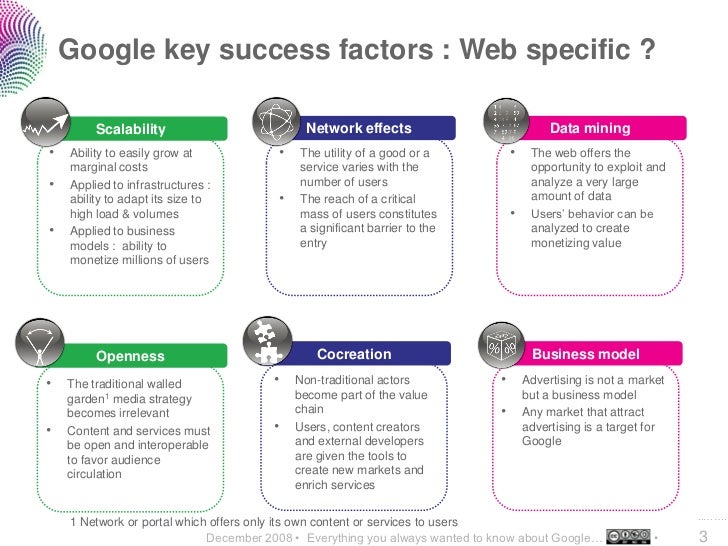Why Adding Images to Google Matters for Your Business
In today’s digital age, having a strong online presence is crucial for businesses to succeed. One effective way to enhance your online reputation and increase visibility is by adding images to Google. By doing so, you can improve your search engine rankings, drive more traffic to your website, and ultimately, boost your online credibility.
When it comes to search engine optimization (SEO), images play a significant role in helping your business rank higher in search results. By optimizing your images for Google, you can increase the chances of your business appearing in image search results, which can lead to more clicks and conversions. In fact, studies have shown that images can increase click-through rates by up to 47%.
Moreover, adding images to Google can also help you establish your brand identity and build trust with your target audience. By showcasing high-quality images that reflect your brand’s values and mission, you can create a positive impression and differentiate yourself from competitors.
So, how can you put an image on Google and start reaping the benefits? The process is simpler than you think. By following a few simple steps, you can optimize your images for Google and start improving your online visibility. In this article, we’ll take you through the process of adding images to Google and provide you with valuable tips and insights to help you get started.
Understanding Google’s Image Search Algorithm
Google’s image search algorithm is a complex system that determines the ranking of images in search results. To understand how to put an image on Google and increase its visibility, it’s essential to know how the algorithm works. The algorithm takes into account several factors, including relevance, quality, and user behavior.
Relevance is a critical factor in determining image ranking. Google’s algorithm assesses the relevance of an image by analyzing its content, including the file name, alt tags, and surrounding text. To increase the relevance of your images, use descriptive file names and alt tags that accurately describe the content of the image.
Quality is another important factor in image ranking. Google’s algorithm favors high-quality images that are clear, well-compressed, and visually appealing. To improve the quality of your images, use high-resolution images, compress them using tools like TinyPNG or ImageOptim, and ensure they are visually appealing.
User behavior is also a significant factor in image ranking. Google’s algorithm takes into account how users interact with images, including click-through rates, dwell time, and bounce rates. To improve user behavior, use images that are relevant to your content, optimize them for mobile devices, and ensure they load quickly.
Additionally, Google’s algorithm also considers other factors, such as the authority of the website, the number of backlinks, and the overall user experience. To increase the authority of your website, create high-quality content, build backlinks from reputable sources, and ensure your website is user-friendly and mobile-responsive.
By understanding how Google’s image search algorithm works, you can optimize your images to increase their visibility and drive more traffic to your website. In the next section, we’ll provide tips on how to prepare your images for Google, including file naming conventions, alt tags, descriptions, and compression techniques.
Preparing Your Image for Google: Optimization Tips
Before uploading your images to Google, it’s essential to optimize them for search engines. Optimizing your images can improve their visibility, drive more traffic to your website, and increase your online presence. Here are some tips on how to prepare your images for Google:
File naming conventions are crucial in image optimization. Use descriptive file names that accurately describe the content of the image. For example, if you’re uploading an image of a product, use a file name that includes the product name, description, and keywords. This will help Google’s algorithm understand the content of the image and improve its ranking.
Alt tags are another important aspect of image optimization. Alt tags provide a text description of the image, which helps Google’s algorithm understand the content of the image. Use descriptive alt tags that accurately describe the content of the image, and include target keywords. For example, if you’re uploading an image of a product, use an alt tag that includes the product name, description, and keywords.
Image descriptions are also important in image optimization. Image descriptions provide a brief summary of the image, which helps Google’s algorithm understand the content of the image. Use descriptive image descriptions that accurately describe the content of the image, and include target keywords.
Compression techniques are also essential in image optimization. Compressing your images can reduce their file size, improve page load times, and enhance user experience. Use tools like TinyPNG or ImageOptim to compress your images without compromising their quality.
By optimizing your images for Google, you can improve their visibility, drive more traffic to your website, and increase your online presence. In the next section, we’ll provide a step-by-step guide on how to upload images to Google, including using Google My Business, Google Drive, and other methods.
Uploading Images to Google: A Step-by-Step Guide
Now that you’ve optimized your images for Google, it’s time to upload them. There are several ways to upload images to Google, including using Google My Business, Google Drive, and other methods. Here’s a step-by-step guide on how to upload images to Google:
**Method 1: Uploading Images to Google My Business**
Google My Business is a great way to upload images to Google, especially if you’re a local business. To upload images to Google My Business, follow these steps:
1. Sign in to your Google My Business account.
2. Click on the “Photos” tab.
3. Click on the “Add photos” button.
4. Select the images you want to upload.
5. Add a description and tags to your images.
6. Click on the “Upload” button.
**Method 2: Uploading Images to Google Drive**
Google Drive is another way to upload images to Google. To upload images to Google Drive, follow these steps:
1. Sign in to your Google Drive account.
2. Click on the “New” button.
3. Select “File” or “Folder” from the drop-down menu.
4. Select the images you want to upload.
5. Add a description and tags to your images.
6. Click on the “Upload” button.
**Method 3: Uploading Images to Google using Other Methods**
There are other methods to upload images to Google, including using third-party tools and plugins. Some popular options include:
1. Google Photos: A photo sharing and storage service that allows you to upload images to Google.
2. Google Blogger: A blogging platform that allows you to upload images to Google.
3. Google Webmaster Tools: A tool that allows you to upload images to Google and monitor your website’s performance.
By following these steps, you can upload your images to Google and increase your online visibility. In the next section, we’ll explain how to use Google’s image search features to your advantage.
Using Google’s Image Search Features to Your Advantage
Google’s image search features can be a powerful tool for promoting your business and increasing online visibility. One of the most useful features is reverse image search, which allows you to search for images that are similar to a specific image. This can be useful for finding images that are relevant to your business, as well as for identifying potential copyright infringement.
To use reverse image search, simply go to Google Images and click on the camera icon in the search bar. Then, upload the image you want to search for, or enter the URL of the image. Google will then show you a list of similar images, along with information about the websites that host them.
Another useful feature is Google’s image search filters, which allow you to narrow down your search results by factors such as size, color, and type. This can be useful for finding specific types of images, such as product images or infographics.
Google’s image search also includes a feature called “similar images,” which shows you images that are similar to the one you’re looking at. This can be useful for finding alternative images, or for getting inspiration for your own image creation.
By using Google’s image search features, you can promote your business and increase online visibility. For example, you can use reverse image search to find images that are relevant to your business, and then use those images in your marketing materials. You can also use Google’s image search filters to find specific types of images, and then use those images to create engaging content.
Additionally, you can use Google’s image search features to monitor your online presence and track your competitors. For example, you can use reverse image search to see if anyone is using your images without permission, or if your competitors are using similar images.
By leveraging Google’s image search features, you can take your online marketing to the next level and achieve greater success. In the next section, we’ll discuss common mistakes to avoid when adding images to Google.
Common Mistakes to Avoid When Adding Images to Google
When adding images to Google, there are several common mistakes to avoid. These mistakes can negatively impact your online visibility and reputation, and may even result in penalties from Google. Here are some common mistakes to avoid:
**Using Low-Quality Images**
Using low-quality images can harm your online reputation and make your website look unprofessional. Make sure to use high-quality images that are clear and well-compressed.
**Ignoring Optimization Techniques**
Ignoring optimization techniques can make it difficult for Google to understand the content of your images. Make sure to use file naming conventions, alt tags, and descriptions to optimize your images for Google.
**Violating Google’s Image Policies**
Violating Google’s image policies can result in penalties and harm your online reputation. Make sure to read and follow Google’s image policies, including guidelines on copyright and usage rights.
**Not Monitoring Image Views**
Not monitoring image views can make it difficult to track the success of your Google image strategy. Make sure to use Google Analytics to monitor image views and adjust your strategy accordingly.
**Not Adjusting Your Strategy**
Not adjusting your strategy can make it difficult to improve your online visibility and reputation. Make sure to regularly review and adjust your Google image strategy to ensure it is aligned with your business goals.
By avoiding these common mistakes, you can ensure that your Google image strategy is successful and effective. In the next section, we’ll discuss how to measure the success of your Google image strategy.
Measuring the Success of Your Google Image Strategy
To measure the success of your Google image strategy, you need to track your image views, engagement, and conversion rates. Here are some metrics to track:
**Image Views**: Track the number of times your images are viewed on Google. This will help you understand how many people are seeing your images and whether your strategy is effective.
**Engagement**: Track the number of clicks, likes, and shares your images receive. This will help you understand how engaging your images are and whether they are driving traffic to your website.
**Conversion Rates**: Track the number of conversions generated from your images, such as sales, leads, or sign-ups. This will help you understand whether your images are driving revenue and whether your strategy is effective.
**Google Analytics**: Use Google Analytics to track your image views, engagement, and conversion rates. This will help you understand how your images are performing and whether your strategy needs to be adjusted.
**Adjusting Your Strategy**: Based on your metrics, adjust your strategy to improve your image views, engagement, and conversion rates. This may involve optimizing your images, changing your keywords, or adjusting your bidding strategy.
By tracking your metrics and adjusting your strategy, you can ensure that your Google image strategy is effective and driving revenue for your business. In the next section, we’ll summarize the importance of adding images to Google and provide final tips on how to maintain a strong online presence using Google’s image search features.
Conclusion: Boosting Your Online Visibility with Google Images
In conclusion, adding images to Google is a crucial step in boosting your online visibility and enhancing your business’s online reputation. By following the steps outlined in this guide, you can optimize your images for Google, upload them to Google’s image search platform, and use Google’s image search features to your advantage.
Remember to avoid common mistakes such as using low-quality images, ignoring optimization techniques, and violating Google’s image policies. By tracking the success of your Google image strategy and adjusting your approach accordingly, you can ensure that your images are driving traffic to your website and generating revenue for your business.
By incorporating Google images into your online marketing strategy, you can:
**Increase your online visibility**: By adding images to Google, you can increase your online visibility and reach a wider audience.
**Enhance your online reputation**: By optimizing your images for Google, you can enhance your online reputation and establish your business as a trusted and credible source.
**Drive traffic to your website**: By using Google’s image search features, you can drive traffic to your website and generate revenue for your business.
**Stay ahead of the competition**: By staying up-to-date with the latest Google image search trends and best practices, you can stay ahead of the competition and maintain a strong online presence.
By following these tips and best practices, you can boost your online visibility and enhance your business’s online reputation using Google images.








